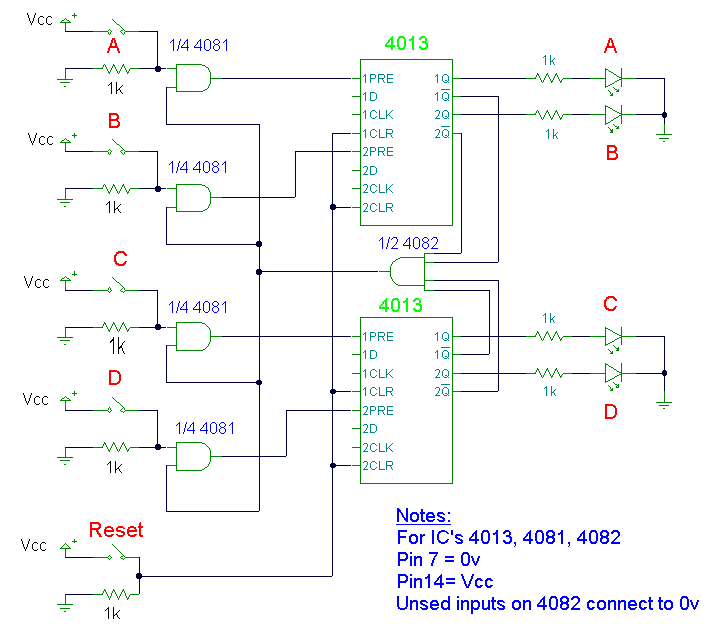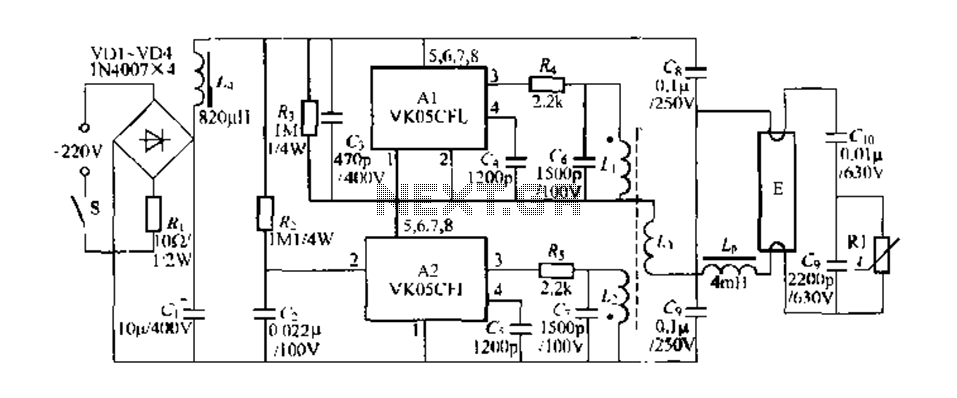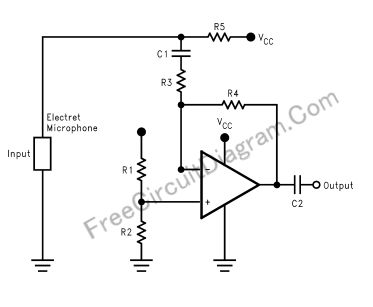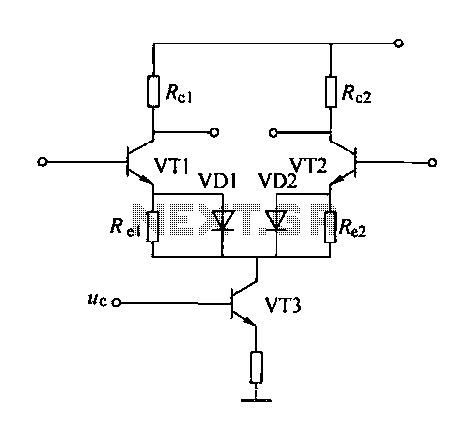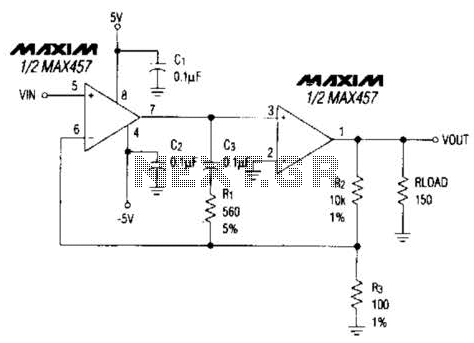
Output 5v / 0.4a small switching power supply circuit diagram
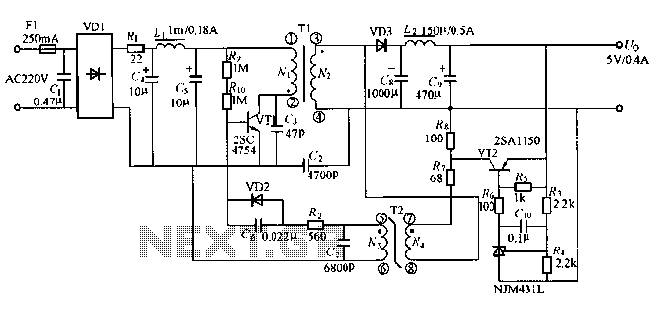
The output displays a 5V / 0.4A low-power switching power supply circuit, which can be utilized to create a transformer saturation soft-switching circuit.
This low-power switching power supply circuit is designed to provide a stable 5V output at a current of 0.4A. It is particularly suitable for applications requiring efficient power conversion with minimal energy loss. The circuit employs a soft-switching technique, which helps to reduce electromagnetic interference (EMI) and improve the overall efficiency of the power supply.
The circuit typically consists of several key components including a switching element (such as a MOSFET), an inductor, a diode, and a capacitor. The MOSFET operates in a switching mode, rapidly turning on and off to regulate the output voltage. The inductor stores energy during the 'on' phase and releases it during the 'off' phase, smoothing the output current. A diode is used to prevent reverse current flow, ensuring that the energy stored in the inductor is directed towards the load.
Additionally, a feedback mechanism is often integrated into the circuit to monitor the output voltage and adjust the switching frequency accordingly. This feedback loop enhances the stability of the output voltage under varying load conditions.
The transformer saturation soft-switching technique specifically allows for lower voltage stress on the switching components, extending their lifespan and improving reliability. This is achieved by ensuring that the switching occurs when the voltage across the MOSFET is minimal, thereby reducing the switching losses.
Overall, this circuit is ideal for low-power applications where efficiency and compact design are crucial, such as in battery-operated devices, portable electronics, and low-power industrial equipment.Is shown in the output is 5V / 0.4A low-power switching power supply circuit, the circuit can be used to make transformer saturation soft-switching circuit.
This low-power switching power supply circuit is designed to provide a stable 5V output at a current of 0.4A. It is particularly suitable for applications requiring efficient power conversion with minimal energy loss. The circuit employs a soft-switching technique, which helps to reduce electromagnetic interference (EMI) and improve the overall efficiency of the power supply.
The circuit typically consists of several key components including a switching element (such as a MOSFET), an inductor, a diode, and a capacitor. The MOSFET operates in a switching mode, rapidly turning on and off to regulate the output voltage. The inductor stores energy during the 'on' phase and releases it during the 'off' phase, smoothing the output current. A diode is used to prevent reverse current flow, ensuring that the energy stored in the inductor is directed towards the load.
Additionally, a feedback mechanism is often integrated into the circuit to monitor the output voltage and adjust the switching frequency accordingly. This feedback loop enhances the stability of the output voltage under varying load conditions.
The transformer saturation soft-switching technique specifically allows for lower voltage stress on the switching components, extending their lifespan and improving reliability. This is achieved by ensuring that the switching occurs when the voltage across the MOSFET is minimal, thereby reducing the switching losses.
Overall, this circuit is ideal for low-power applications where efficiency and compact design are crucial, such as in battery-operated devices, portable electronics, and low-power industrial equipment.Is shown in the output is 5V / 0.4A low-power switching power supply circuit, the circuit can be used to make transformer saturation soft-switching circuit.
